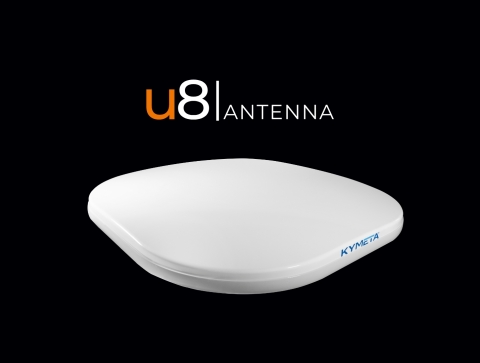Kymeta readies full-service offering, further growth with $85 million Bill Gates-led funding round
Kymeta plans to expand its satellite-centric products by the end of year with Kymeta Connect, a full-service offering that can integrate cellular connectivity and managed services—developments being supported by today’s announcement of a $85 million funding round led by Bill Gates, according to the company.
Kymeta President and COO Walter Berger said Kymeta’s flat-panel satellite antenna has gained traction in the marketplace during the past 18 months. After the recent purchase of Lepton Global Services, the introduction of Kymeta Connect next quarter is expected to launch the company into a new commercial phase, he said.
“We have been principally a seller of hardware and software,” Berger said during an interview with IWCE’s Urgent Communications. “We will continue to be a seller of hardware and software, but we will have customers that actually will have needs beyond that.
“The reason we created Kymeta Connect was really to provide an end-to-end solution for customers that need an end-to-end solution. An end-to-end solution will not just simply include the hardware and software, but it will include the acquisition, management, etc., of capacity—whether it’s satellite or cellular—and a host of other managed services that go with it.”
Helping fund this development is the $85 million funding round led by Microsoft co-founder Bill Gates, who has been a backer of Kymeta from the company’s beginning, according to Berger.
“This wasn’t like we found Bill,” Berger said. “Bill and his team created the idea [of Kymeta].
“Bill has remained committed to this, from the beginning through today. He never stepped away from it.”
Berger said the funding will help Kymeta in three ways.
“The funding continues to allow us to enhance the product over this next year or so, to make it even a more robust product,” Berger said. “Second, it’s going to allow to … go deeper, in terms of customer-facing, customer-experience, go-to-market activities. Thirdly, it’s going to allow us to build Kymeta Connect, which is the full-service product offering.”
Kymeta’s U8 hybrid antenna will let users access geosynchronous (GEO) satellite signals and 4G cellular connectivity. With additional development enabled through the new funding, Kymeta hopes to expand its connectivity support to include technologies such as 5G cellular, as well as mid-earth-orbit (MEO) and low-earth-orbit (LEO) satellite connectivity in the future, Berger said.
“We understand where the market is going, so we want to give our customers … great optionality around connectivity,” Berger said.
“We’re about connectivity on a global basis. To do that, you’ve got to evolve through the existing infrastructure, which is GEOs, MEOs and LEOs. And, you got to provide optionality around delivery of connectivity and capacity, and that’s what we do.”
Kymeta plans to target the critical-communications industry with its hybrid satellite-cellular solutions—from the military to domestic public safety—noting that the company is talking with all three nationwide U.S. wireless carriers, according to Berger.
“All three have their first-responder activities, and we’ve been in dialog with them,” he said. “We are continuing to grow our presence in that vertical.”
Berger said the need for always-available broadband connectivity bodes well for Kymeta’s future.
“This market is continuing to become better defined, more relevant and with better user cases,” Berger said. “I think our product has unique capabilities. I think the use cases are compelling … And the fact that we have a hybrid offering capable of interacting with the ecosystem of satellite systems is very interesting.
“I think the other dynamic around that is that we’ve continued to be funded, which is just further demonstrating the want and the interest and the uniqueness of our land-mobility focus, because of how important that is going to be [to first responders], to rail, to train, to mobility—even all the way, in the next several years, to the autonomous automobile.”
















